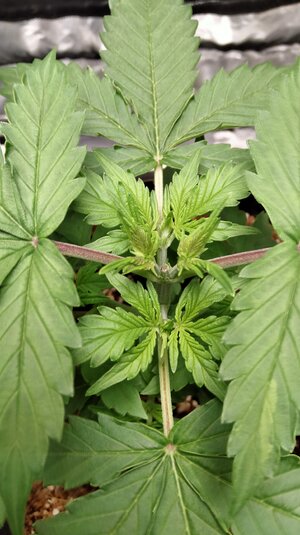I agree with everyone here. The light you have shown is more of a spot light to boost light in areas where plants are getting reduced natural light.
Cannabis is a light loving plant. It can handle high levels of light. I suggest if you are doing 2 plants. Depending on your grow space size, there are plenty of lights that will work for you in the sub $200 which would be about £150-170.
Mars hydro, spider farmer, ac infinity, viparspectra all make great intro lights in that price range. My ac infinity s44 is ac infinity's largest quantum board led. Its meant for a 4x4 space but I am using it in a 3x3. They have an s22, s24 s33, and my s44. The 22 is made for a 2x2 at 100w the 24 is made for a 2x4 space at 200w, the s33 is 240w and for a 3x3. All these lights are full spectrum and are good for growing from seed to harvest.
The one thing you want to look for is PAR/PPFD rating/efficacy. Cannabis can handle up to 2000umol/sec. Indoor this is hard to achieve, and would also require special conditions for growing like supplemental co2 and increased nutrients.
Most grow lights are rated to output 1000umol/sec at a certain hang height. Most grow lights suitable for growing cannabis will have a par map, and ppfd efficacy rating on its spec sheet along with a spectrum output. You want a nice balanced spectrum and enough power to cover your entire canopy with roughly 600-800umol/sec during flower on autos and about 800-1000umol for photos in flower.
The right light can be the difference between .5g/watt and 1.5g/watt.
This is an example of the info to look for when buying. Always check reviews. Also check the migro youtube channel out for learning the basics of light requirements for grow areas and what light efficiency actually means. The par map directly below is the average PAR coverage at full power at the hang heights listed above each par map. Its a great baseline to get an idea of the amount of photosynthetic light the canopy is receiving at a given height. Another great tool paired with a smartphone is the photone, or ppfd app. Both can give you accurate readouts of your lights performance.
Both apps have been shown to be 98% accurate to the leading quantum light sensors used by labs around the world. Both apps require a small amount of set up but are an invaluable tool for indoor horticulture.
View attachment 1550019View attachment 1550020View attachment 1550021
Keep in mind the info given above does have critera as well. The ppfd ratings I gave for autos is for ones recieving 18 hours of light a day giving it a dli of around 40. DLI is the total amount of light recieved by a plant over its daily light cycle. Photos generally require stronger light as they recieve less overall light during flower. Where in an auto can get up to 24 hours of light meaning the light doesn't need to be as strong. If you'd like to know more hit up that migro youtube channel. Shane goes over all of this in relatively simple terminology.
PAR=photosyntheticly active radiation or the spectrums of light that allow photosynthesis.
Ppfd=photosynthetic photon flux density. Measurement used to define par. It is the measurement of the amount of photosynthetic photons over a sample area per second. Measured in micromols or umol.
DLI=Daily Light Integral. The total amount of par recieved over the daily light cycle. This measurement is usually in mols as it is hundreds of thousands of micromols over 12,18,20,24 hours of light instead of per second.




